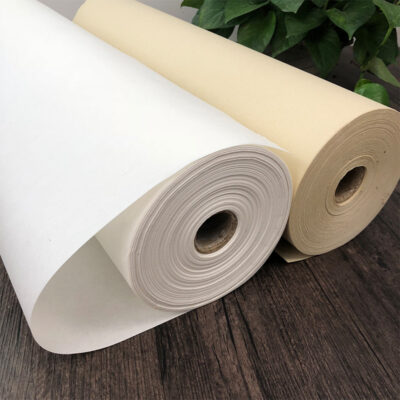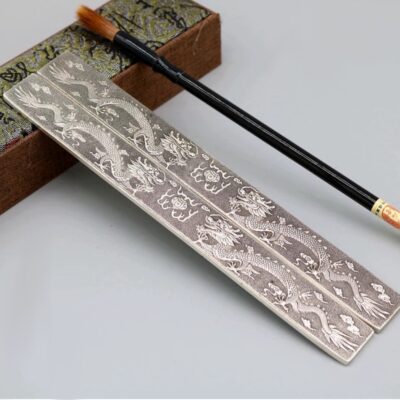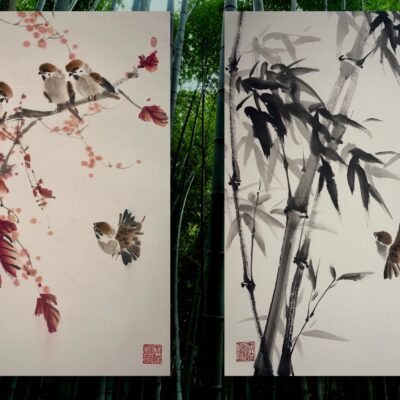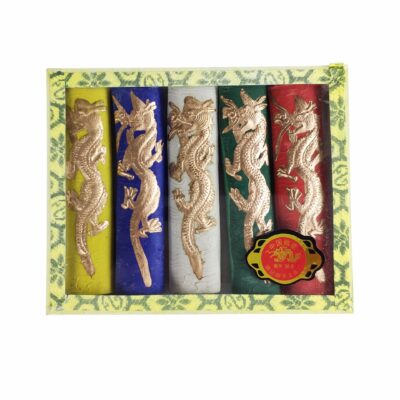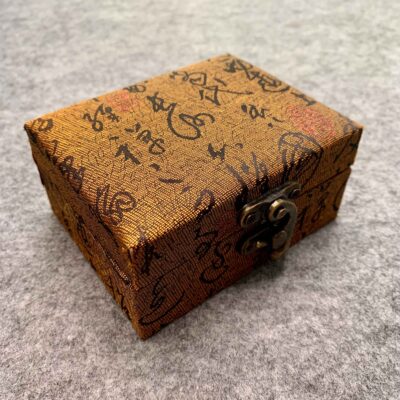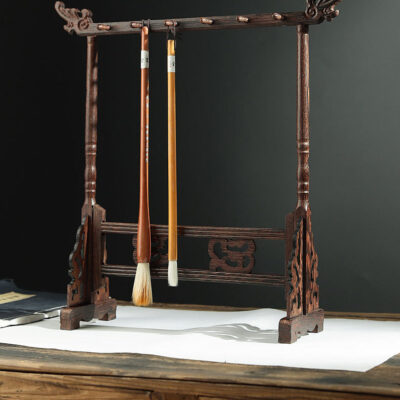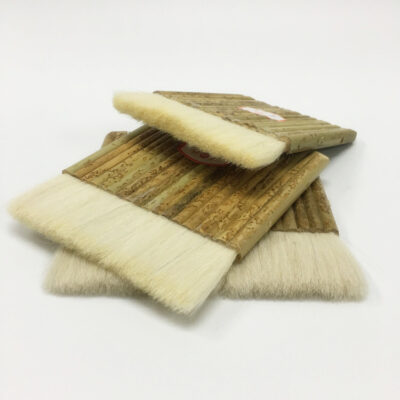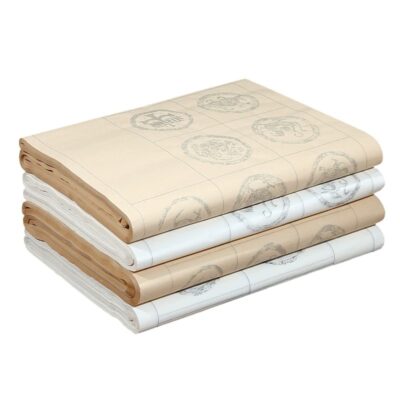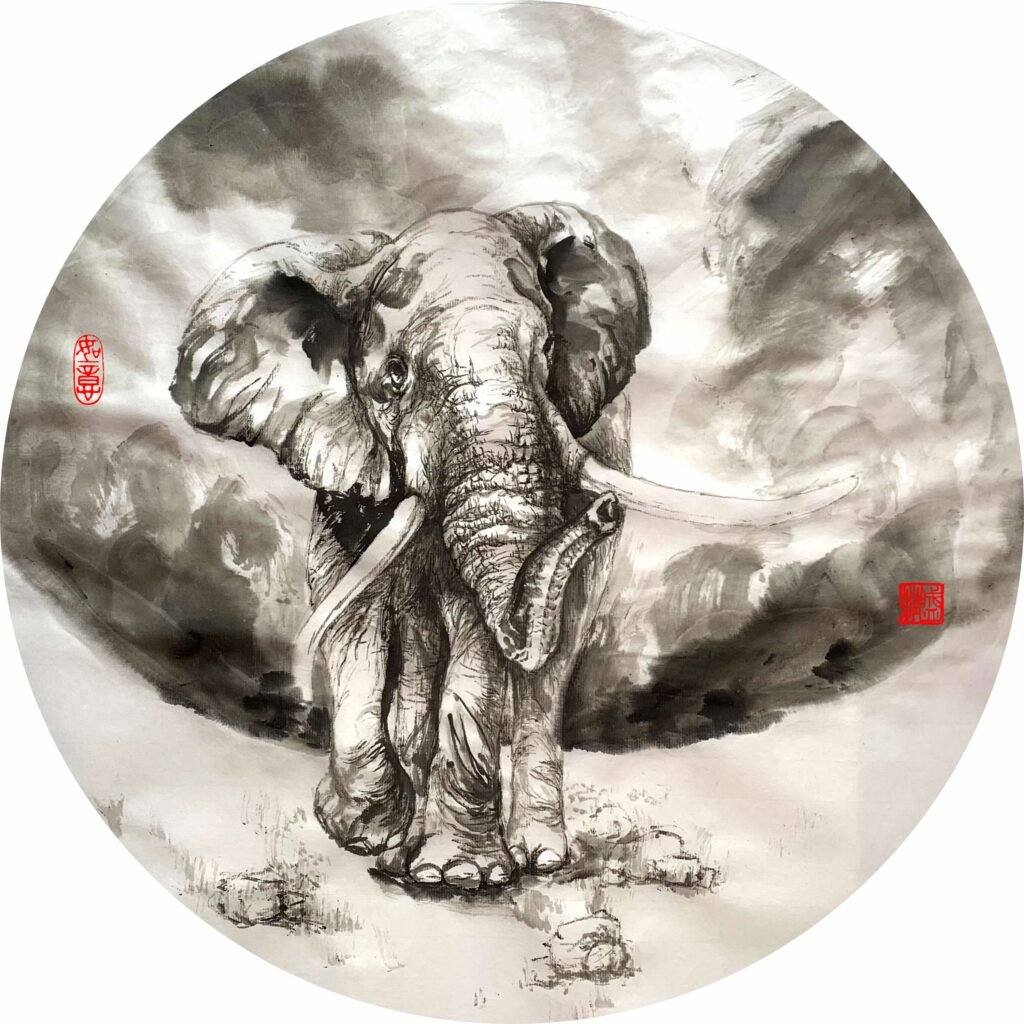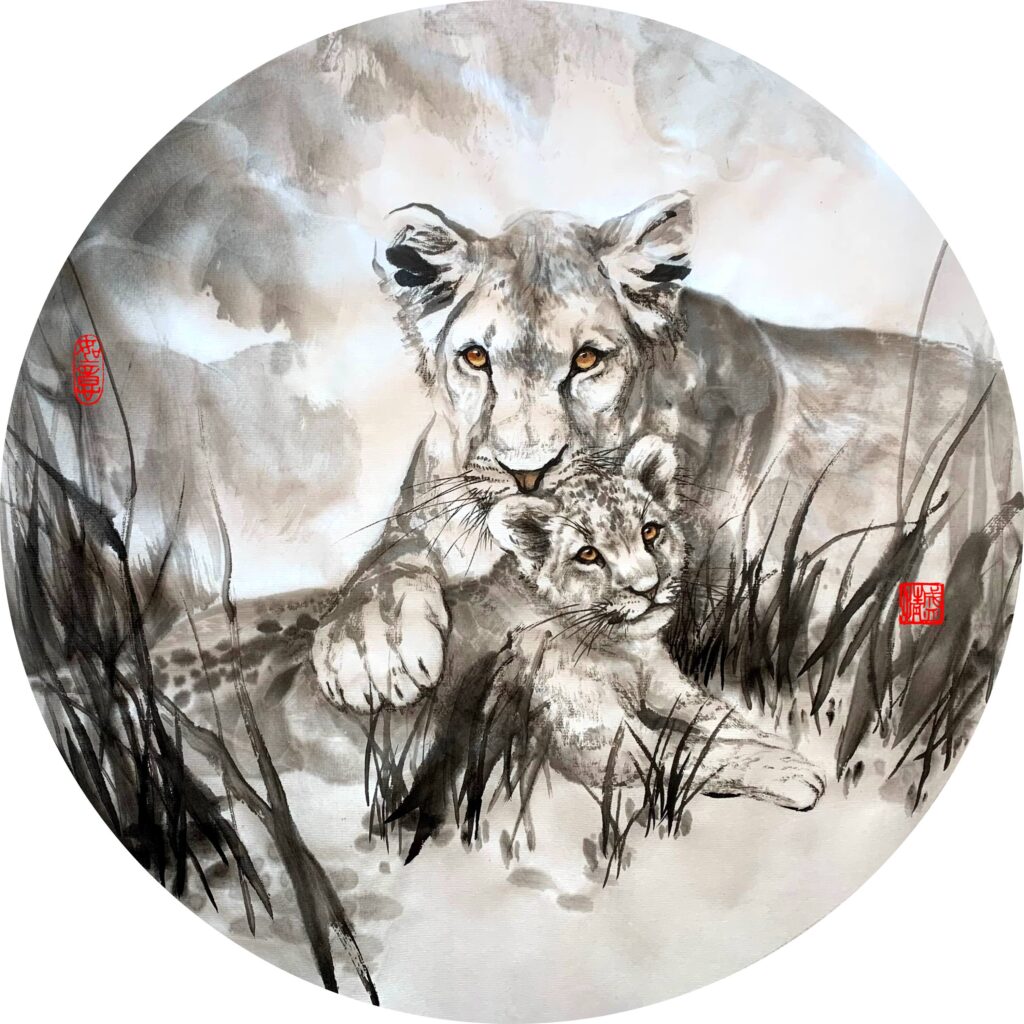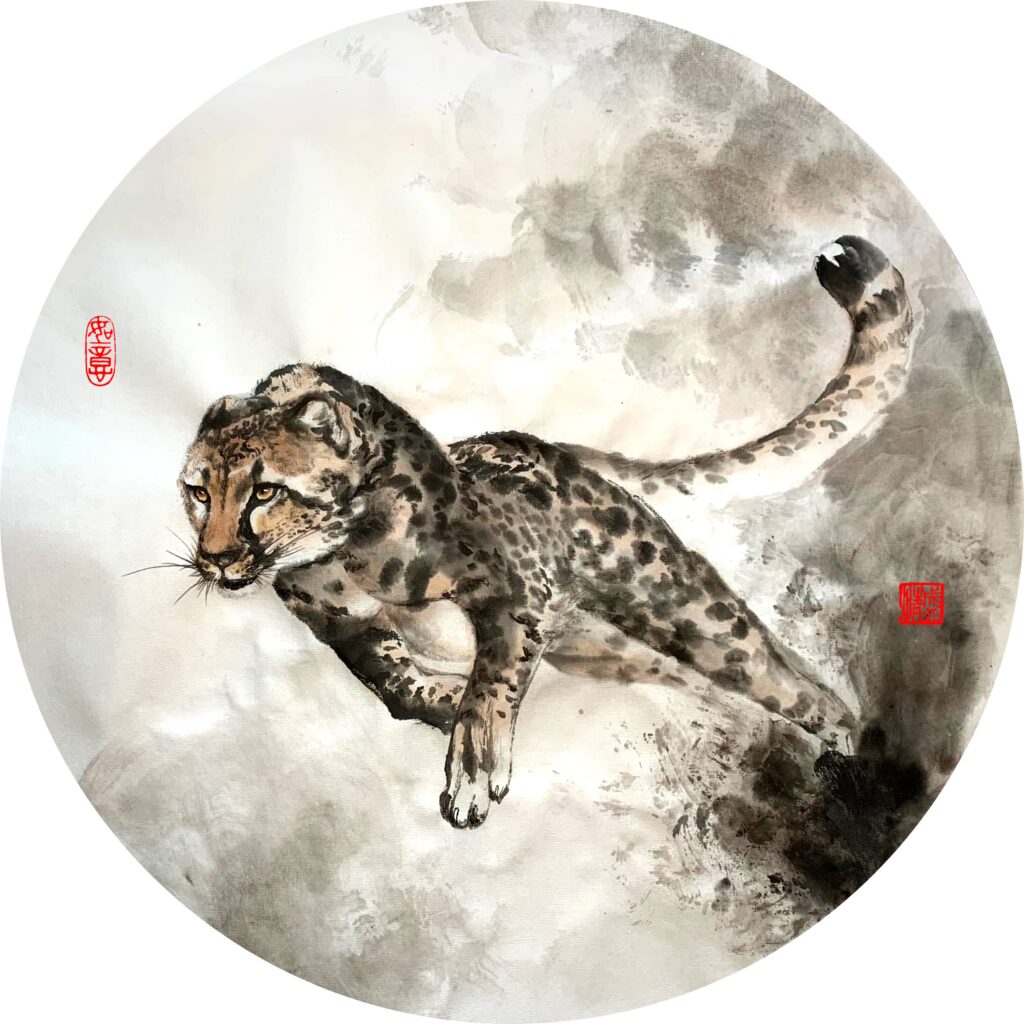We say that a picture is worth a thousand words, it is especially true in the oriental paintings. The oriental society is full of riddles, in poetry, in visual art, and in the daily iterations. Perhaps the mystery around the oriental world has a lot to do with this “speaking in riddles” tendency, adding to the difficulties in the intercultural communication. So, today let us start to try and resolve some aspects of such difficulties, and discuss some important symbolisms in the painting and daily lives.
To discuss these symbols, we shall first understand what the general public wants: happiness, wealth and longevity. The absolute majority of the symbolisms are related to one or more of these aspects. To start with, let us discuss what things are considered “happy” or “content”. Generally speaking, auspicious things bring happiness, beautiful plants and fortunate events can all be considered happy. In this category almost any flower, bird, fish, auspicious animal and even mythical creatures can come in. But we are going to take some special examples.
Bats
One animal that stands out is the bat. Bats (“蝠”) in pronunciation is similar to happiness (“福”), “fu”, and bats appear quite often in traditional auspicious images. If you take a look at these characters, you may see that they are identical in right side. The left sides suggest their “properties”, in here bats belong to the “worm” family, and the happiness go with the “pray” radical.

Gods of Happiness, Wealth and Longevity
Illustration from the internet
The three aspects that concern our daily lives each has a governing god shown in the illustration. The one with the official hat is the wealth god; the one with the large forehead is the longevity god, and the other adult is the happiness god. These gods are often seen together in the same hall of a temple.
In this illustration you can also see a few bats flying above, they are the bringers of happiness in these illustrations, but it does not mean that people actually enjoying their company in homes!
Magpies
The magpies are very lucky birds in the oriental beliefs, the origin can be traced back to a story where a man was wrongfully imprisoned. One day he saw a magpie singing at the window of his cell, and a few days after this sighting he was magically released! Since then, magpies have always been associated with fortune and happiness. In traditional weddings they are also often seen, especially in pairs.
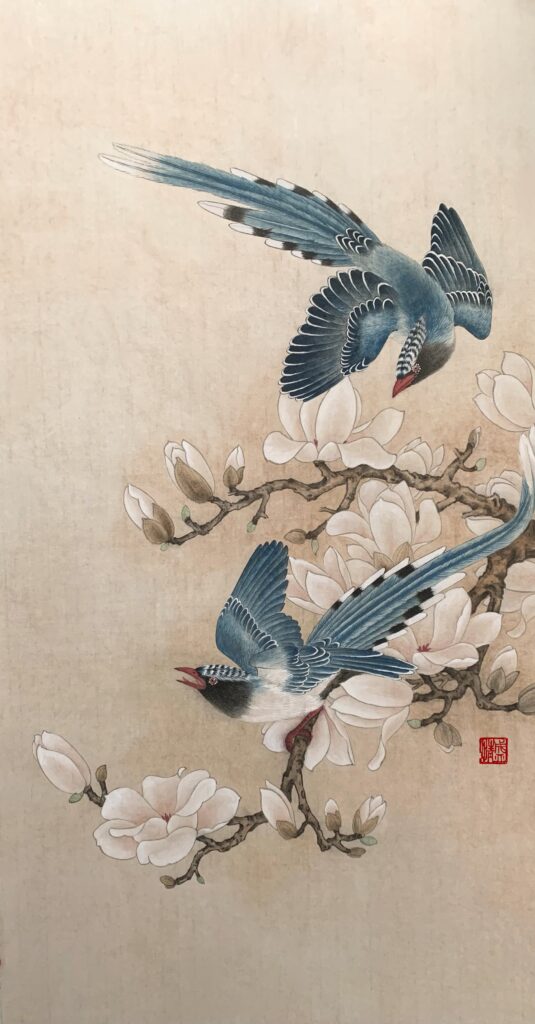
Painting by Fiona Sheng
The reason why magpies represent happiness is also in their names, “喜鹊”, happiness bird, and the first character “喜” is the same character used in wedding ceremonies. This character is sometimes written as “囍”, as people love happiness in pair, they even doubled the happiness in the written character!
Chicken
You may find this one interesting, chicken in Chinese is “鸡”, and the word for auspicious is “吉”, and these two characters share the sound “ji” in common, even though the tones are different. From this similarity however, chicken (roosters included) are taken to mean happiness and fortune. You most likely have seen oriental paintings of chicken or roosters, other than the fact that they are very household animals, the notion of auspiciousness is not to be underestimated!
The chicken was thought to be the inspiration of the creation of phoenixes. They are considered diligent beings, as they announce the arrival of dawn each morning, they are also seen as virtuous creatures – the five colors associated with the five elements can all be seen in the same body, and they each represent one key aspect of virtue.

In addition, roosters also have a large red crown, and crowns are just as important as hats in the official ranks – they suggest social status. Having roosters in paintings potentially bring career advancements too. Plus the roosters are brave, they hold their heads high – all these qualities are absolutely loved in the oriental culture.
Goats or Sheep
The last one I would like to mention is goat or sheep. In Chinese these words are not immediately distinguishable without a defining adjective. The character of goat or sheep is “羊”, whereas the character of auspicious is “祥”. You can see why these animals are worth mentioning! They were quite often used as decorative patterns since ancient times, and they serve as one of the key animals in sacrifice rituals. In later societies the rich families could also afford to raise them, connecting them subsequently to the notion of wealth. Therefore in traditional paintings, you can find their rather frequent appearance.
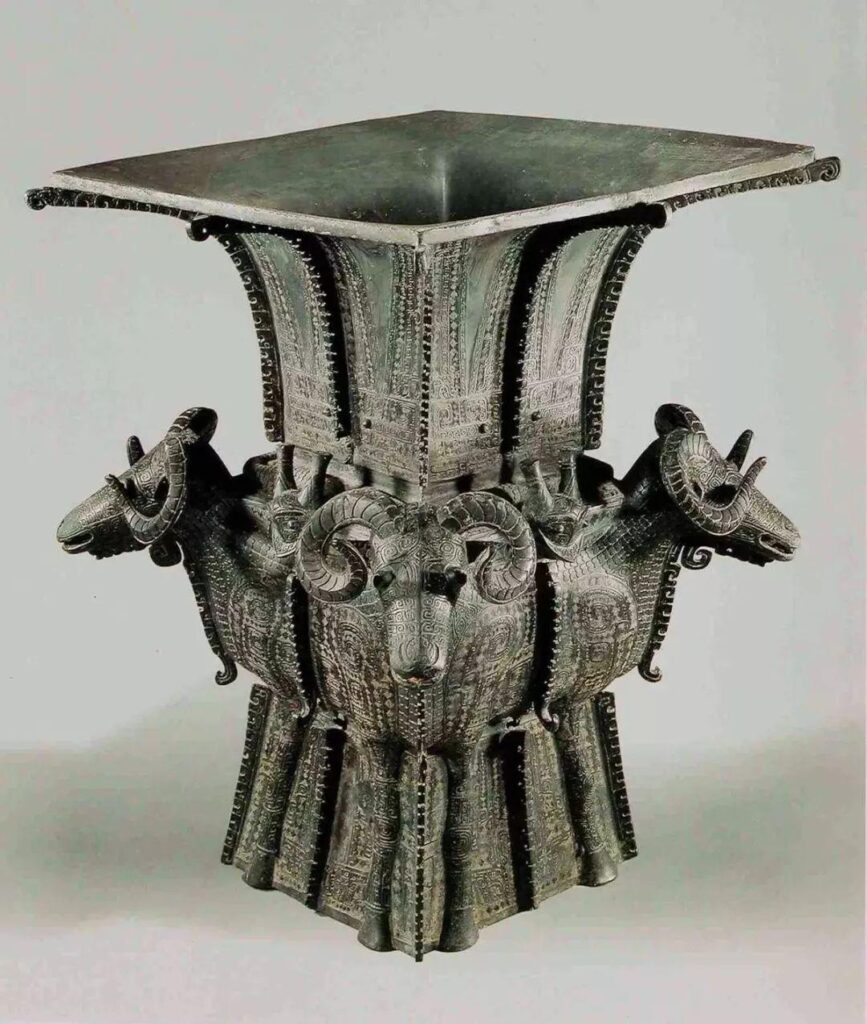
There are many symbolisms in the oriental culture, and today we are just starting to scratch the surface. In the coming blogs I will try and uncover more of such “secret codes” and share them with you, so stay tuned!
Enjoy such cultural discussions? Have comments? I look forward to hearing from you!
Original Chinese Brush Painting, Calligraphy Courses & Art Supplies

